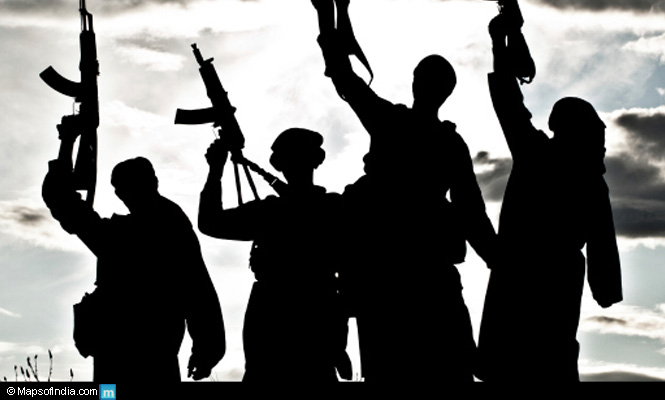 What do you make out of the news that says 10 people have been arrested in Assam in connection with the October 2 Burdwan blast? That terror is spreading its tentacles in northeast India is an old subject, but what is new is that the recent developments point to something more sinister.
What do you make out of the news that says 10 people have been arrested in Assam in connection with the October 2 Burdwan blast? That terror is spreading its tentacles in northeast India is an old subject, but what is new is that the recent developments point to something more sinister.
Terror kingpin Sahanoor Alam was the 10th to be arrested in the Burdwan blast case. He is the ‘financial brain’ of the terror outfit, Jamaat-ul Mujahideen Bangladesh (JuMB). Alam, the ‘most wanted man’ in the case, has been setting up the hubs of JuMB across eastern India. For those unaware, JuMB is also working to destabilize the Sheikh Hasina Government. Alam was also involved in a plot to assassinate the Bangladesh PM.
Dentist by profession and terrorist by practice, the most unnerving of all the titles Alam has received must be this: ‘face of Jihadi movement in Assam.’ Alam’s arrest and the arrest of his kin Saburuddin Ahmed on November 14 from the Nalbari district (Alam was also arrested from the same district) could be cases in isolation, but these isolated incidents actually piece a puzzle together.
Vulnerable areas in Assam
The arrests related to the blast case actually started on October 10 when six persons were taken into custody from Barpeta district, which is Nalbari’s neighbouring district in lower Assam. The next day, three more were arrested from Assam’s Dhubri district. In a similar incident, police seized a huge cache of explosives from Goalpara district. A few days later on October 21, a suspected linkman of an Islamic terror group was killed by the security forces in Kokrajhar district.
If reports are to be taken at face value, the Central intelligence agencies have designated some of the “vulnerable” areas in the State. A common man’s prognosis would say that these areas are the entire southern or the lower Assam that comprise the above districts.
Strategy adopted by Jihadi groups
The Assam police is of the view that the youth of the riot-hit regions of Assam are the “most vulnerable” to motivation by these jihadi groups. To set up the hubs in Assam and West Bengal, their ploy has been to get a local identity by marrying the local women.
There is something more worrying than the foiled terror attack planned during Modi’s Assam visit. Based on the interrogations of the arrested members of JuMB, it has come to pass that radical Islamic forces are trying to make inroads into the Muslim-dominated areas of the State. They have been reportedly instructed to remain as sleeper cells and hunt for potential Muslim youths who will readily join the jihad campaign. Besides ideological indoctrination, these sleeper cells had also undergone training in handling explosives at madrasas in Burdwan and Murshidabad districts of West Bengal.
It was long time back when veteran BJP leader LK Advani had professed that the violence in Assam should not be portrayed as a Hindu-Muslim conflict. It’s rather a conflict between Indians and foreigners who are illegally infiltrating the borders. That’s perhaps the key to counter the dual problems of a porous border with Bangladesh and continuous infiltration of various terror elements.
Explore More:
- Headley’s Deposition in 26/11 Mumbai Terror Attack : Interesting Facts & Diclosures
- 26/11 Mumbai Terror Attack: Details Review, Reasons & Facts
- The Pathankot Terror Attack: An Analysis
- Top 10 Terror Attacks in India
- India’s 10 Most Wanted Men
- Most Active Militant Groups in India
- Terror of Drones – Deadly weapon in hands of Terrorists
- How is India preparing to counter the ISIS threat?
- Terror Attacks: Has Jihadi Movement Come to Northeast?
- Is ISIS a threat to India?
- Why do our youth want to join ISIS?
- Z Plus Security
- Cross border firing Issue between India and Pakistan
- West Bengal – Why It’s Called A Safe Haven For Terrorists?
- Terrorist Attacks in India – New use of cycle
- Hindu-Muslim Relationship
Cross border firing Issue between India and Pakistan
Revisiting Mumbai Terror Attack: No Lessons Learnt from 26/11
West Bengal – Why It’s Called A Safe Haven For Terrorists?
Terrorist Attacks in India – New use of cycle
Hindu-Muslim Relationship
In the Name of Jihaad (Part II): 2013 Patna Bombings




